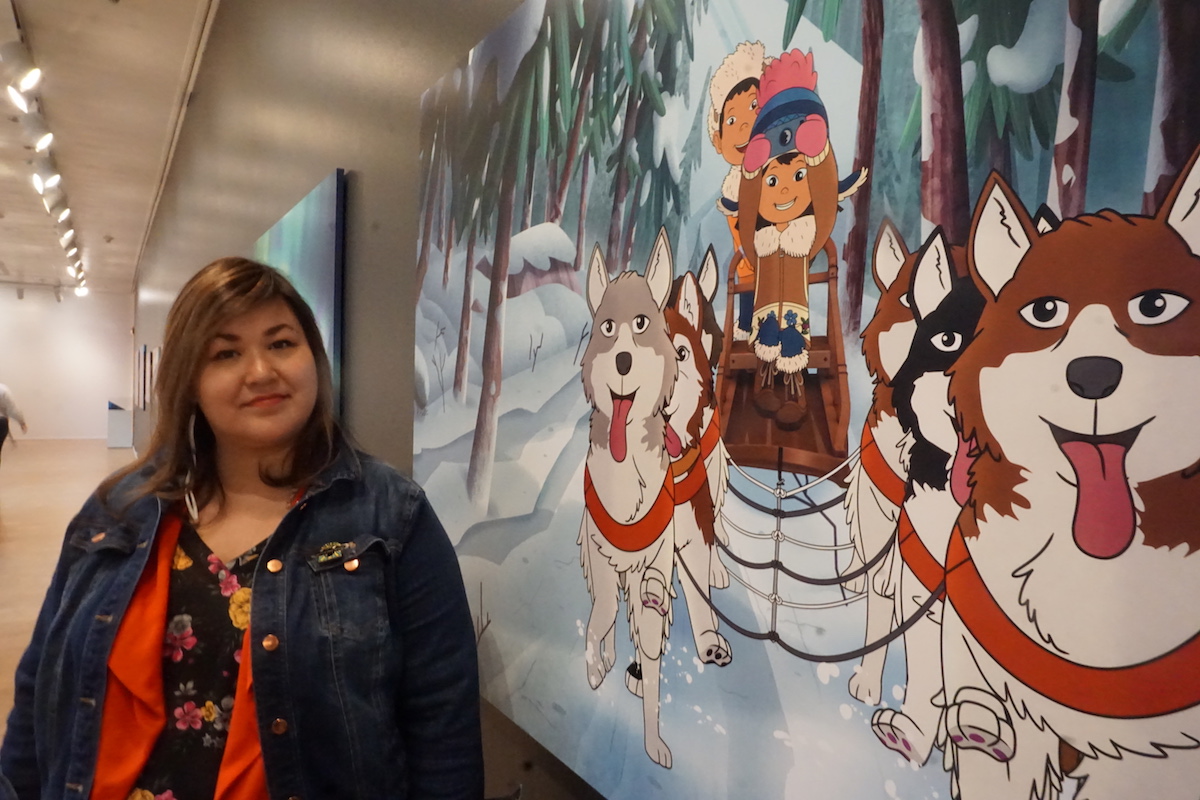Educational TV show for kids has broader message about North’s indigenous peoples
PBS series “Molly of Denali” uses Alaska Native culture as the backdrop for lessons about literacy and problem-solving in the digital age.

When the new PBS KIDS television show “Molly of Denali” begins airing on public television stations in July, viewers will get more than lessons in literacy and problem-solving. (A sneak preview is provided below.)
The first national animated television series with an Alaska Native lead character, “Molly of Denali” will also help set the record straight about the North’s indigenous peoples.
Even the simple acknowledgment that Alaska Natives exist in the modern era is an improvement from past practices, said Rochelle Adams, an Anchorage-based artist who is part of the Alaska Native working group helping shape content for “Molly of Denali.”
“Growing up, I never saw anyone on TV I could really connect with,” Adams said. “I didn’t really see anyone who looked indigenous or more specifically, Alaska Native, in movies or in magazines.”
That absence from popular culture has been costly — to Native people’s self-confidence and self-worth, and even to their land, resource and human rights, which can be more easily violated if their people’s very existence is ignored, according to Adams.
“We’re the first people of the land and we still live here, but in many aspects we’re invisible,” she said.
Adams believes “Molly of Denali” will help change that by creating an “authentic” portrayal of northern indigenous life.
“As Alaska Natives, we can tell our own story,” she said. “With the creation of the show and the creation of the character of Molly, we really put a lot of that into who she is and what she looks like and what her family looks like and what she wears.”
Molly Mabray, a spunky 10-year-old who lives in the fictional interior Alaska village of Qyah, is of Gwich’in, Koyukon and Dena’ina Athabascan heritage. The show is created for children between the ages of 4 and 8 and focuses on teaching ways to use informational texts — research aids like maps, reference books and charts and graphs. Molly uses a map to help her father navigate a four-wheeler, for example, and she uses photos retrieved from internet searches on her smartphone to find medicinal plants in the wild.
“She’s so feisty, and she’s so smart,” Adams said.
[For northern museums, exhibits of indigenous art are increasingly community efforts]
The Gwich’in are indigenous to both sides of the Alaska-Yukon border, and “Molly of Denali” has a Canadian angle as well. The show will air in Canada on the CBC. A Canadian animation studio, Atomic Cartoons, is the co-producer, and several members of the largely indigenous cast and crew are Canadian.
Like Molly, Adams is of mixed heritage — Gwich’in, but also Koyukon, Inupiat, Swedish and Japanese. She grew up in Fort Yukon and in Beaver. Her childhood was filled with tradition, like summer treks to fish camp. Tradition, culture and past trauma is touched on in “Molly of Denali;” one episode, titled “Grandpa’s Drum,” focuses on authorities’ past efforts to squelch Native culture.
At the same time, Molly — like Adams — is fully modern. And something that has frustrated Adams, along with the inevitable questions she has fielded about igloos, is the pervasive idea in the dominant U.S. culture that Northern Native people are not part of the modern world.
“Even in a lot of museum exhibits, I’ve noticed that they refer to us in the past tense. It gives us extra work to do as Native people,” said Adams, attended Mt. Edgecumbe High School, a well-regarded Alaska Native boarding school in Sitka, and the Institute of American Indian Arts in Santa Fe, New Mexico. “We’re constantly having to educate people, and we have to educate our own children.”
[Indigenous cookbook’s mix of food, culture proves winning recipe]
Some of the educational work is being done by the Anchorage Museum of History and Art. The museum this month opened an exhibit titled “The Culture of Media: Representation from Nanook to Molly”, devoted to the portrayal of Alaska Natives in pop culture — and the ways that “Molly of Denali” contrasts with past portrayals.
Much of the representation up to now, as shown in the exhibit, has been wildly inaccurate, condescending or weirdly exploitative.
One example: a section in a 1977 Time-Life book called that describes the Athabascan people with the heading “An impoverished race of nomads.” The exhibit has an expanded page from the book, complete with corrective edits.
Another display is on the weird side: a 1975 print advertisement that invokes Native people as symbols of freshness to sell Tampax tampons. “You feel like a happy Eskimo,” says the ad.
Adams said she and others hope that “Molly of Denali,” once it starts airing, will help end the stereotypes.
“It’s not just a cartoon,” she said.